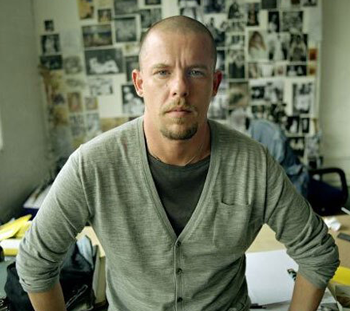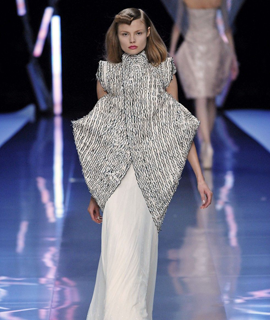
Alexander McQueen
The Gothic sensibility of a Brothers Grimm fairytale is closer in spirit to Alexander McQueen’s clothing – than the fetish, gore and misogyny he’s been accused of promoting. However dark McQueen’s design, it still achieves a femininity that has seduced everyone from Bjork to the Duchess of Westminster.
McQueen’s rise to power is a fashion fairytale all of its own. The East End taxi driver’s son, born in 1969, is apprenticed to the Prince of Wales’ tailor Anderson & Sheppard on Savile Row where he infamously scrawls obscenities into the linings of HRH’s suits. He works with Romeo Gigli, theatrical costumers Angels & Bermans and Koji Tatsuno before Central Saint Martins MA course director Bobby Hilson suggests he enrol.
His 1992 ‘Jack the Ripper’ graduation collection thrills members of the British fashion press, none more so than Isabella Blow who buys the entire collection and adopts McQueen as one of her proteges.
McQueen’s bloodline of angular, aggressive tailoring is inherited from MGM costume designer Adrian, Christian Dior and Thierry Mugler.
His ‘Highland Rape’ and ‘The Birds’ collections used Mr Pearl corsetry to draw in the waist and exaggerate square shoulders and sharp pencil skirts. Brutality tempered by a lyricism characterises the McQueen style. By 1996 he was named British Designer of the Year.
1996 also saw McQueen replace John Galliano as head of Givenchy haute couture. But by 2001 the Gucci Group had acquired a controlling stake in McQueen’s own label and the designer left both Givenchy and LVMH. Since then, McQueen’s eponymous label has dazzled Paris with bittersweet theatrical presentations. 2003 saw the launch of his first perfume, Kingdom, and a bespoke menswear collection produced by Savile Row tailor Huntsman; in 2004 his men’s ready-to-wear was shown in Milan for the first time.


